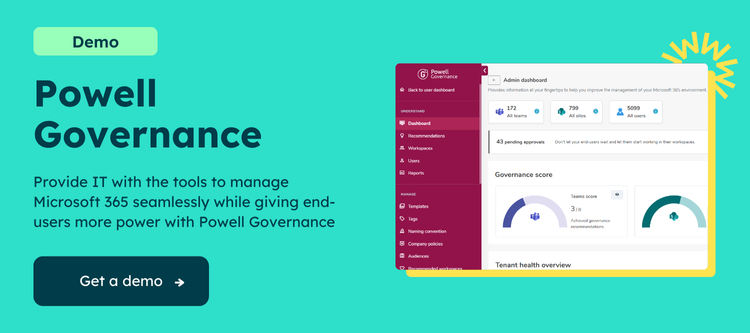Understanding the Available Statuses in Microsoft Teams
Once you set up Microsoft Teams, you can use a wide range of Microsoft Teams settings and statuses. These statuses are displayed in the upper-right corner of the Teams app and let people know if you’re available, busy, away, or offline.1
Microsoft teams status settings, what are your options ?
- Available: This status indicates that you’re available and ready to chat.
- Busy: This status indicates that you’re busy and not available for chat.
- Do not disturb: This status indicates that you want to focus or you present your screen and don’t want notifications to pop up.
- Be right back: This status indicates that you are temporarily away.
- Appear away: This status indicates that you’re away from your computer and not available for chat.
- Appear offline: This status indicates that you’re not signed in to Teams and not available for chat. You will still receive notifications if someone messages you.
Are you using MyAnalytics on Outlook?
You can book focus time in your calendar. During that time, your Teams status will appear as ‘Focusing’, and all notifications will be silenced until your focus time ends.
Setting Your Status in Microsoft Teams: Step-by-Step Guide
Setting your status in Microsoft Teams is a great way to communicate your availability to your colleagues and avoid interruptions when you’re busy with important tasks. By following these simple steps, you can set your status in Teams and stay productive throughout the day.
Here’s a step-by-step guide on how to set your status in Microsoft Teams:
Step 1: Open Microsoft Teams and sign in to your account.
Step 2: Click on your profile picture or initials in the top right corner of the Teams interface.
Step 3: In the menu that appears, click on your status
Step 4: You can choose one of the pre-defined statuses such as “Available”, “Busy”, “Do not disturb”, “Be right back”, “Appear away” or “Appear offline”. Alternatively, you can create a custom status message by clicking on “Set status message” and typing in your message.
Step 5: You can also add a status duration to let your colleagues know how long you’ll be in that status. You can choose a predefined time such as 30 minutes, 1 hour, 2 hours, today, this week or “Customed” to specify a specific duration.
Step 6: When you’re done, click “Done” to save your status message and duration.
Step 7: Your status will now be visible to your colleagues on Teams. They’ll be able to see whether you’re available to chat, busy with something else, or unavailable.

Customizing Your Status Settings in Microsoft Teams
Now that you understand the available statuses in Microsoft Teams, let’s take a look at how to set and customize your status settings.
Setting Status Scheduling in Microsoft Teams
You can set status scheduling in Microsoft Teams. This feature allows you to set a specific status to be applied during certain hours of the day. To do this, open the Teams app and click on the profile icon in the upper-right corner. Then, select “Set Status” and click the “Scheduling” button. On the “Set Status” page, you can configure status scheduling by selecting a start and end time, as well as a status. Once you’ve configured your status scheduling, click “Save” to apply it. There is also the possibility to add “schedule out of office” with this setting.

Best Practices for Using Microsoft Teams Status
Settings Now that you know how to set and customize your status settings in Microsoft Teams, let’s take a look at some best practices for using Microsoft Teams status settings.
- Keep your status up to date: Make sure to keep your status up to date so that your colleagues know when you’re available and when you’re not.
- Set automatic status changes: Configure automatic status changes to ensure that your status is always up to date, even when you’re away from your computer.
- Set status scheduling: Set status scheduling to indicate when you’re available and when you’re not during certain hours of the day.
- Update your profile: Update your profile to include your current status and any other relevant information about your availability.
The benefits of Microsoft Teams status for managers
For managers, the Microsoft Teams status feature is a powerful tool to enhance team productivity and communication. It allows managers to:
- Monitor Availability: Easily see who is available, busy, or offline, facilitating better task delegation and meeting timing.
- Reduce Interruptions: Respect team members’ focus time by understanding their Do Not Disturb status.
- Improve Collaboration: Identify the best times to collaborate or reach out for urgent tasks.
- Plan Effectively: Use status data to plan workloads and manage team capacity more efficiently.
These benefits help managers lead more effectively and ensure a well-coordinated team environment.
Optimizing Communication through Statuses
Microsoft Teams statuses provide a valuable tool for conveying your availability and work schedule to colleagues. You can streamline communication and avoid disruptions by effectively utilizing these statuses alongside features like Microsoft Teams channels.
-
Scheduling Meetings: Once you’ve set your status, consider initiating meetings using the built-in functionality. Learn how to set up a Microsoft Teams meeting to collaborate effectively with your team.
-
Information Protection: While collaborating, ensure sensitive information is protected. Refer to the Microsoft Teams information protection guidelines to implement appropriate security measures within your Teams environment.
-
Content Sharing and Control: During meetings, you might need to share control over your screen to deliver presentations or brainstorm ideas. Discover how to give control in Teams to transfer control and facilitate collaboration seamlessly.
-
Enhanced Collaboration: Consider integrating Powell Teams with Microsoft Teams. Powell Teams offers functionalities to elevate your teamwork experience by streamlining task management and communication within your channels.
-
Personalizing Your Experience: Finally, explore the available Microsoft Teams settings. You can customize notification settings, manage your calendar view, and configure accessibility options to personalize your Teams experience and optimize your workflow.
Conclusion
Microsoft Teams offers a wide range of statuses to help you stay connected with your colleagues. With the ability to set and customize your status settings, you can ensure that your colleagues always know when you’re available and when you’re not. By following the steps outlined in this guide, you can easily master Microsoft Teams status settings and stay connected with your colleagues.
